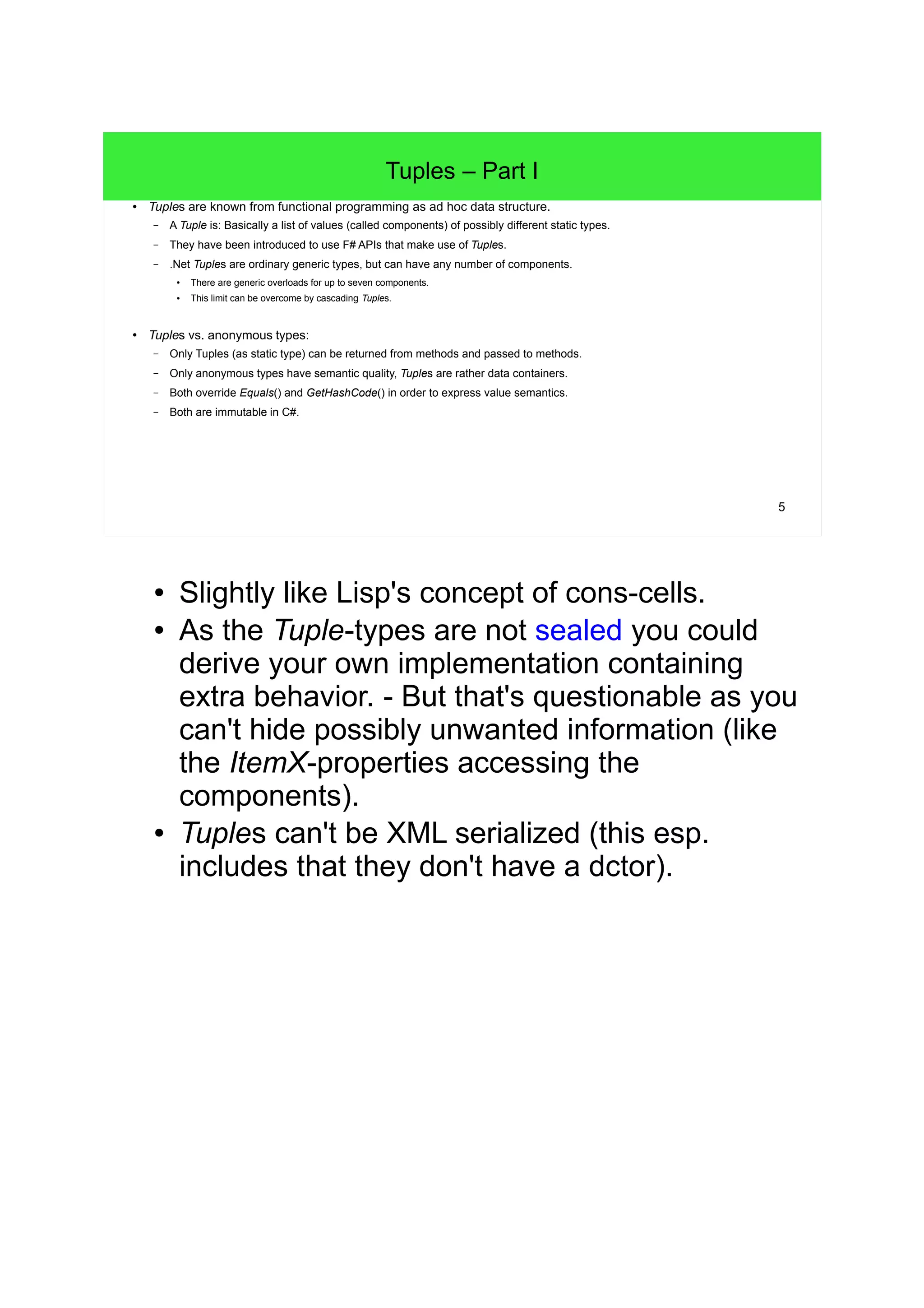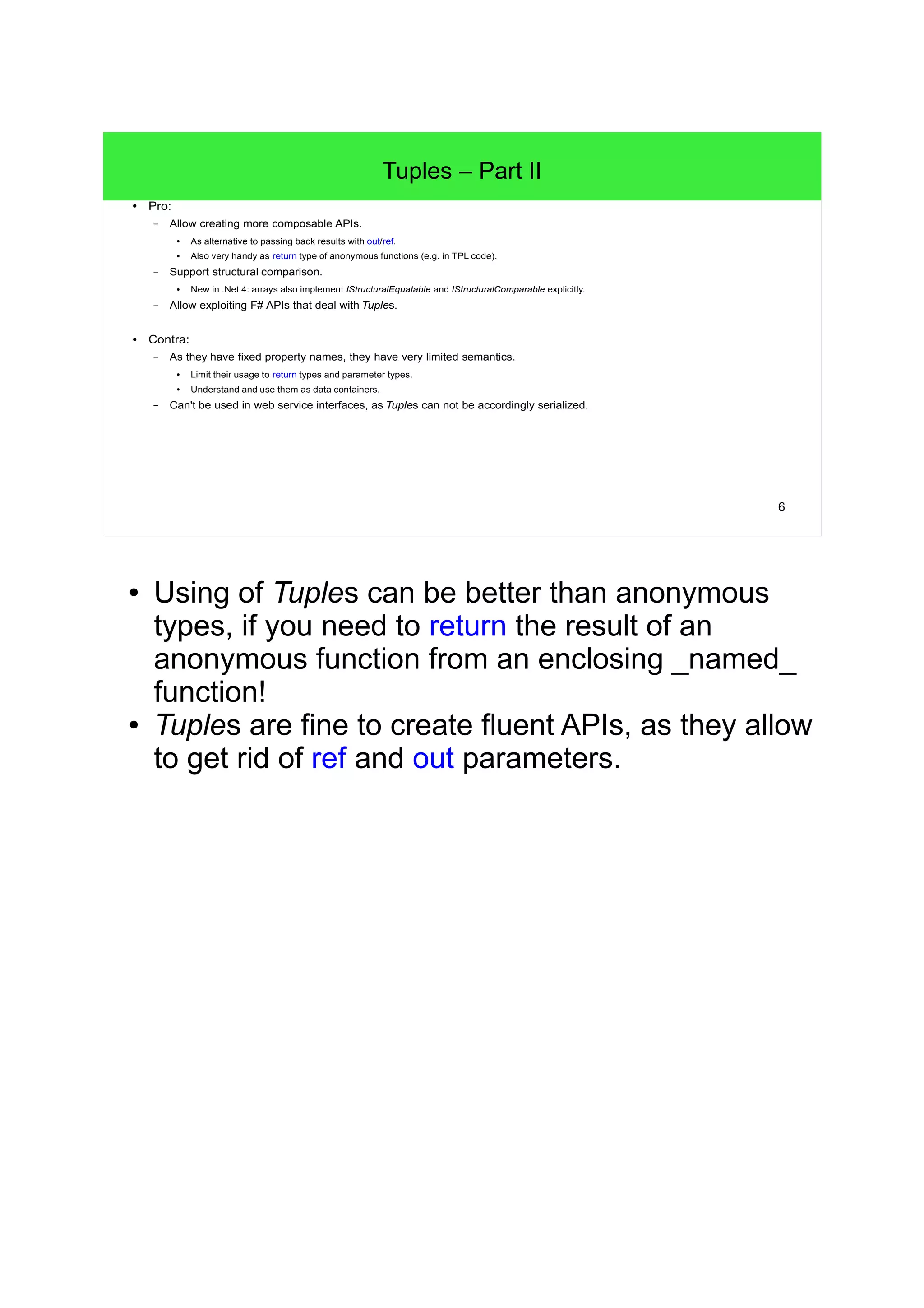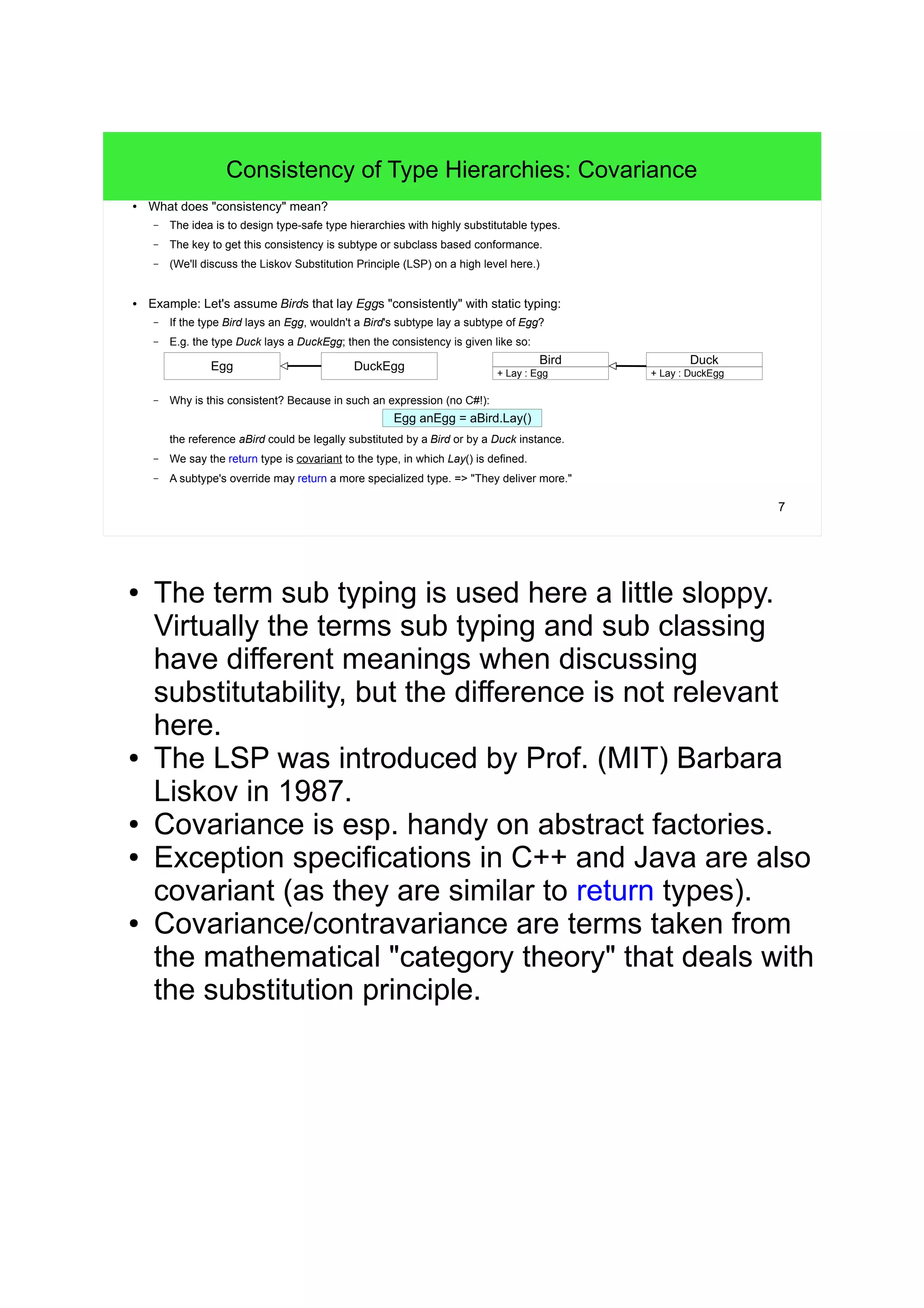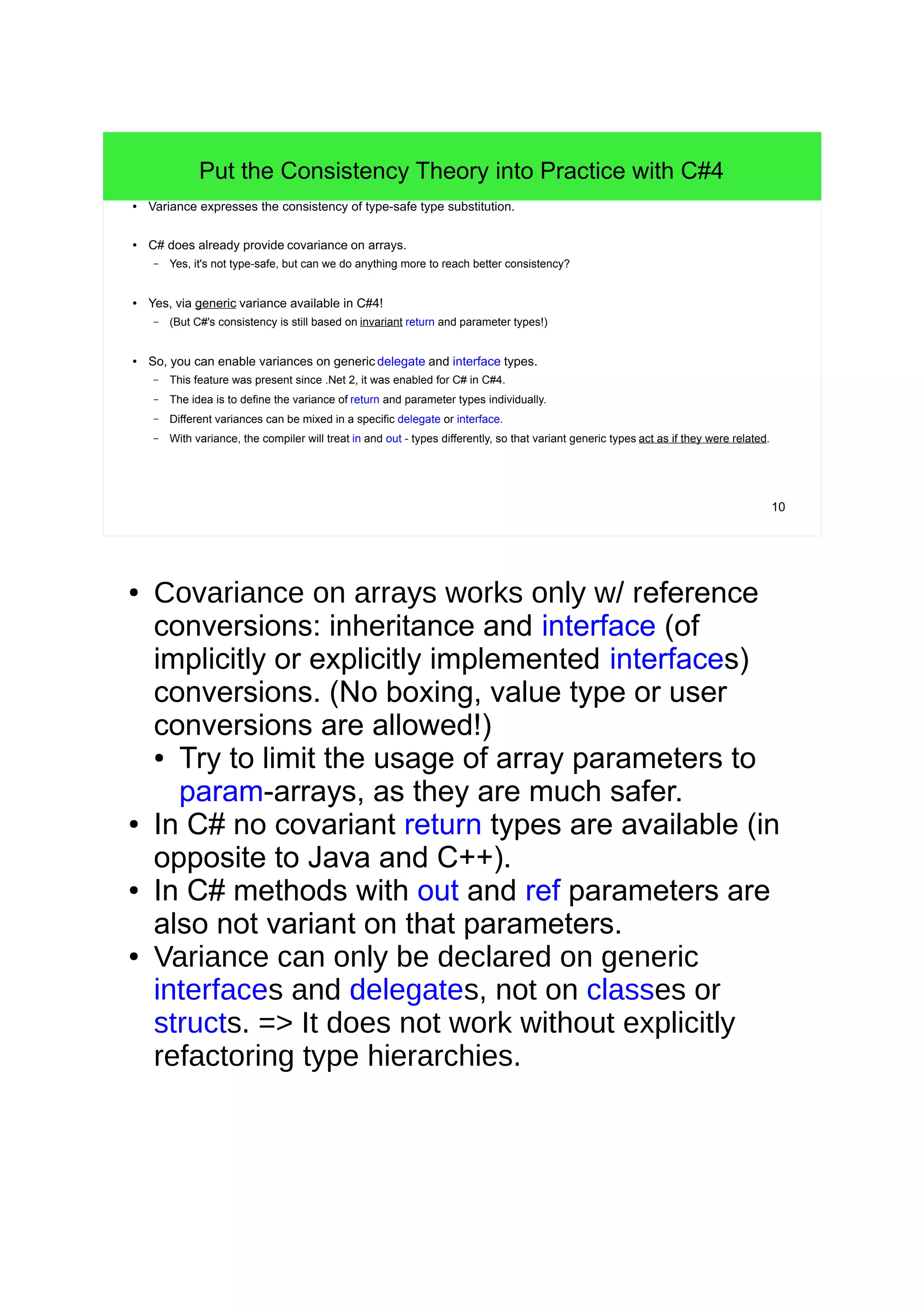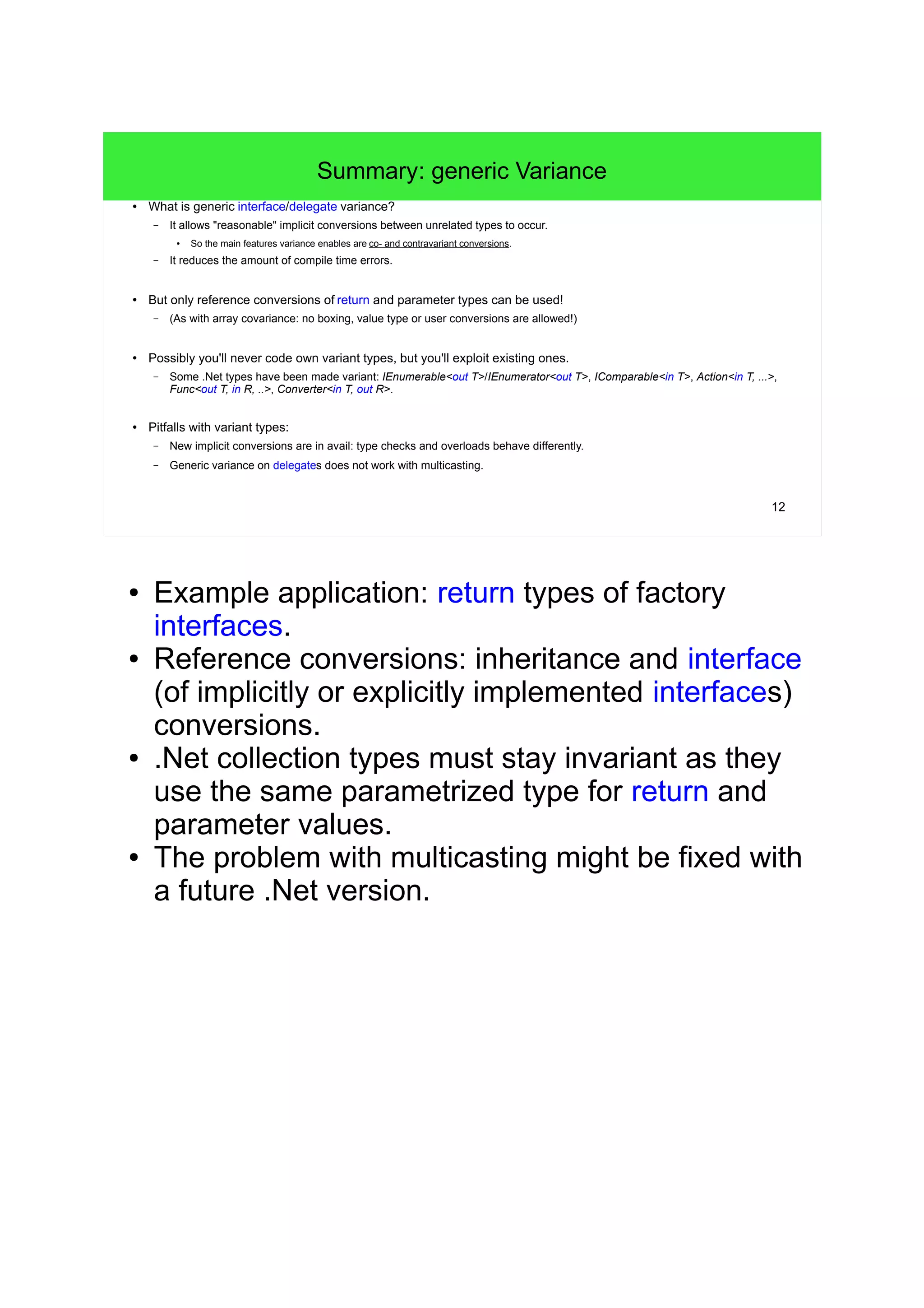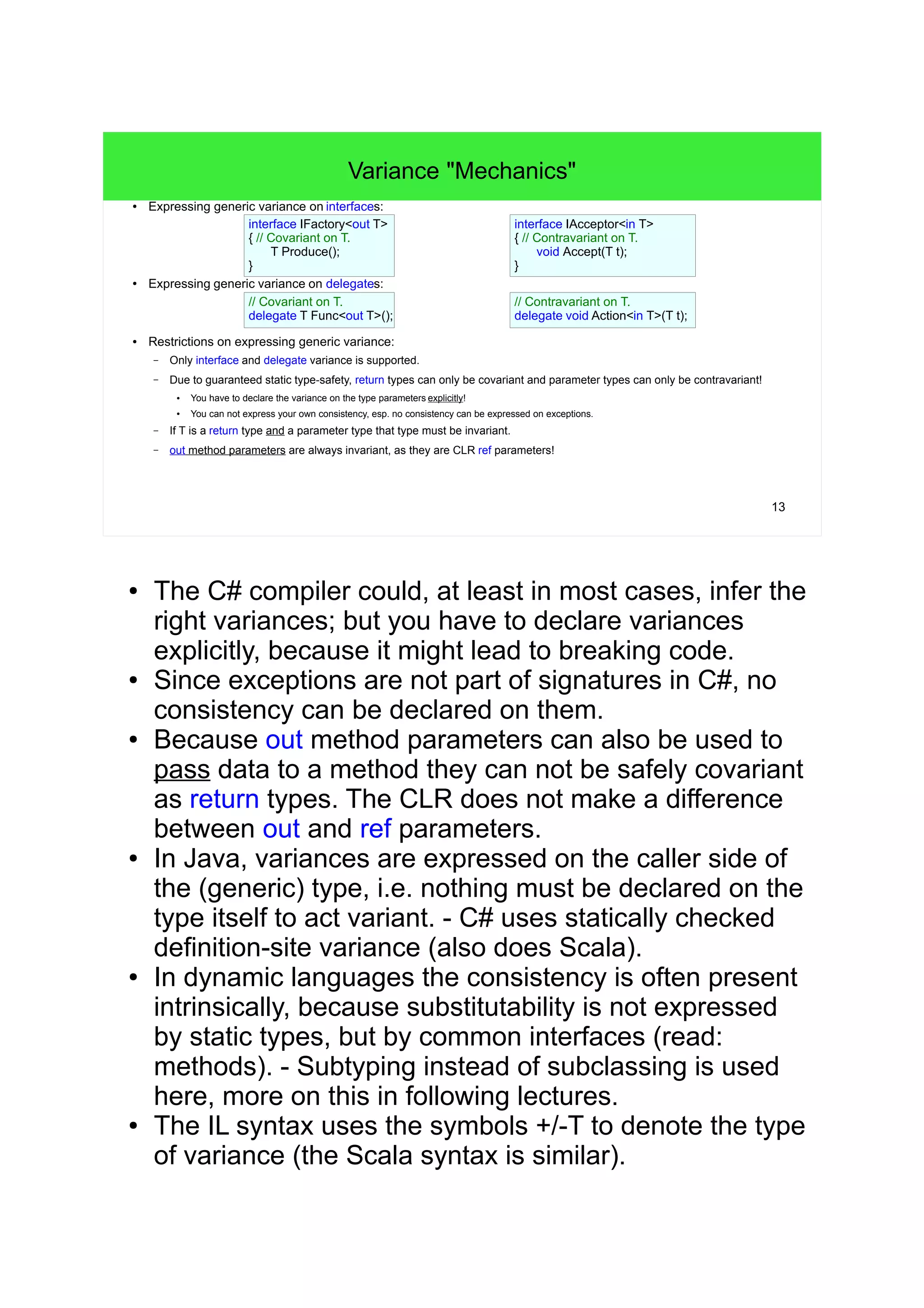This document summarizes new generic types and features in C# 4, including Lazy<T> for deferred initialization, tuples for ad-hoc data structures, and generic variance. Generic variance allows covariant and contravariant conversions between generic types to promote substitutability. It was enabled for interfaces and delegates in C# 4 through explicit variance declarations like "out T" and "in T". This improves type safety over arrays, which allow unsafe covariance in C#.




